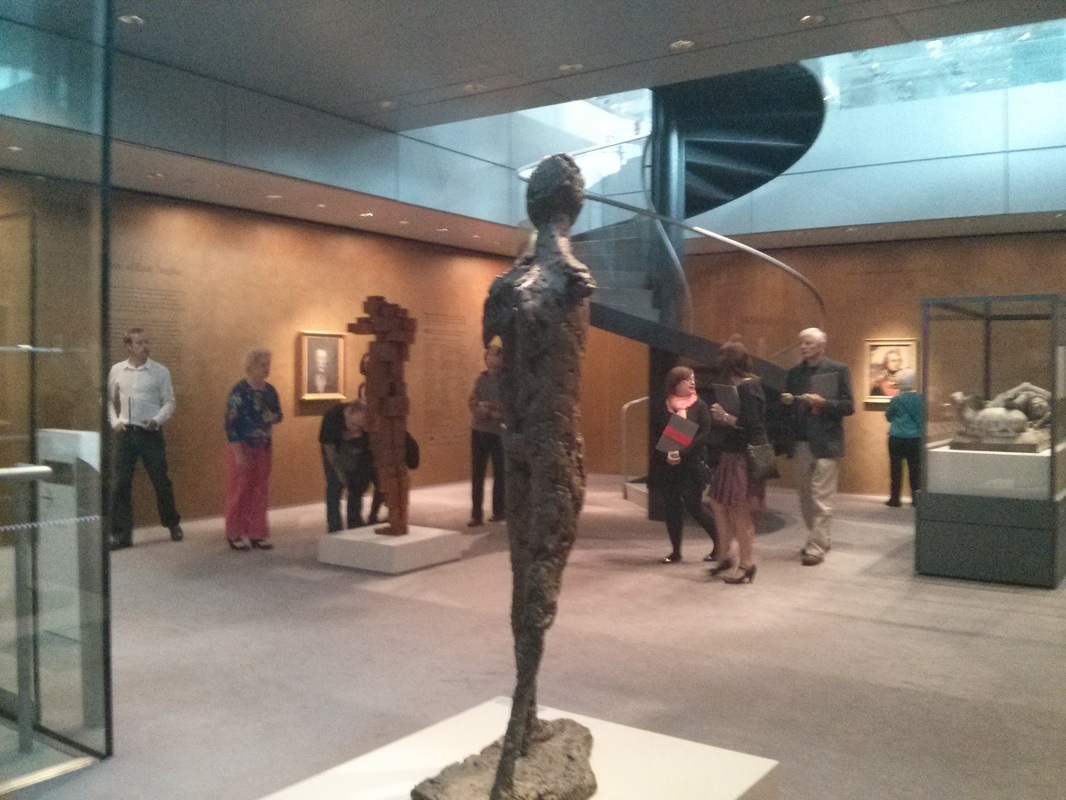Curated by Ian Collins and the Sainsbury Centre team, it is a celebration of art and artefacts connected with the region, many of which have been dispersed across the globe for centuries. For the first time, many of the connections Having had a preview this week, I can say that it is a stunning exhibition in a stunning space. The exhibition galleries have been moved downstairs while the permanent collection remains in the Living Area of the Norman Foster-designed building. Foster's practice is still involved with the Sainsbury Centre and worked very closely on the architectural and spatial changes to the building. The big glass wall at the west end has been opened up for the first time in many years. The reserve collection and ceramics by Hans Coper and Lucie Rie have also been moved upstairs and into the light and airy spaces of the ground floor. The shop is also upstairs in a giant 'polo' arrangement, where you are also welcomed by gallery attendants and guides, overlooked by a huge work by Ana Maria Pacheco, a boat with figures sculpted in her very distinctive style (picture below). A Brazilian-born artist, Ana was head of Fine Art at the Norwich School of Art (now NUA) in 1985-89.
Downstairs, the luxuriant and newly refurbished spaces, really make a difference to the feel of the building, and the way work can be displayed. I don't want to spoil all the surprises before you get there but walking down the spiral staircase and into what used to be the shop is breath-taking in impact. They have also opened the ceiling of that space so that it is almost like an open-air space. It is rich and luxuriant, and appropriate to the work with a theme of precious metal running through the lower galleries displaying the work of masters such as Munnings, Gainsborough, Cotman, Constable, Stubbs as well as more contemporary work by artists such as Self, Fritsch, Moore, , Hepworth, Nicholson, Frink, Hambling and many more. this is in addition to the permanent collection of Francis Bacon portraits, Picasso drawings, the Anderson Art Nouveau collection and the collection of World Art objects which we are used to seeing but are shown in a different context.
Within the Masterpieces exhibition, there are also many artefacts which are interestingly displayed - a flint hand-axe dating from around 700,000BC which is the oldest object in the exhibition is shown with a piece by Henry Moore, Reclining Figure which was carved from an Ironstone pebble found on exactly the same beach at Happisburgh in Norfolk - they have not been linked in this way before. Other objects such as a Norwich Shawl, once the epitome of fashion and desirability in London and coloured with local madder dye (made in Madder Market), and the King John Cup - bejewelled and enamelled and crafted from silver and gold, dating from 1325.
This is only scratching the surface of an enormous exhibition - I can't remember all of the things of which I thought 'I must come back and look at this properly'. I was particularly impressed by the Despenser Retable which is a painting dating from the late 14th century which was turned upside down and used as a table top for centuries before being rediscovered, presumably when someone dropped a fork!
You really must go, be prepared to spend a day and if you live locally, the low entry price of £8 means that you can go back as I will have to do as the preview only enabled me to take a glimpse at a few of the hundreds of treasures (250 more precisely) in this exhibition which runs until 24 February. Furthermore, the Sainsbury Centre will be opening to 8pm every day to enable people to visit after work and to park when the rest of UEA is not so busy as it is during the day. Details for booking and opening times etc are on the website www.scva.ac.uk and below are details of the talks programme associated with the exhibition. There is a mammoth catalogue designed by Norwich-based East Publishing which you can buy in the shop for £25 - a feast of bedtime reading for many months to come. The exhibition runs till 24 February 2014

 RSS Feed
RSS Feed

